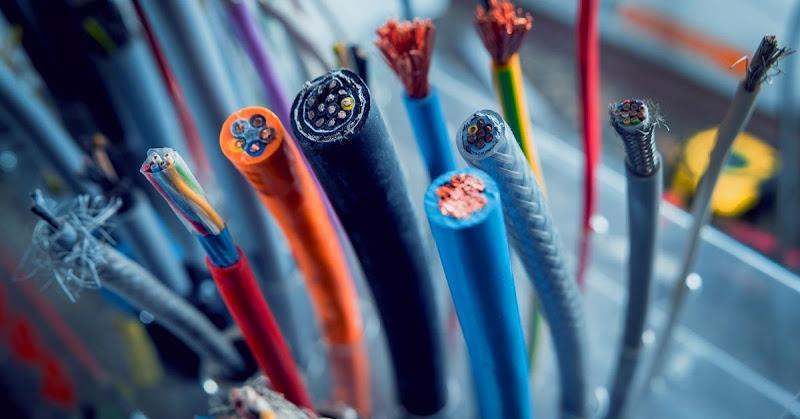As new gadgets and electronics emerge, it can be easy to be distracted when shopping for hardware – cables. That seemingly nondescript piece of wire connects everything and plays an integral role in system performance; selecting suitable lines has an enormously profound effect. In this article, we’ll take an in-depth look into this subject while offering guidance for choosing convenient options for your system.
At Its Core: Understanding Cable Importance
Before we talk about cable selection, let us pause to recognize their importance. Cables play an invaluable role in our tech systems by quietly transporting data, power, and signals between various components – without interrupting daily life or entertainment experiences – whether gaming, professional content creation, or binge-watching TV series, cables provide critical digital services that enhance digital experiences for us all.
Imagine this: after purchasing an expensive gaming PC with an HD monitor, a powerful graphics card, and a lightning-fast processor. However, laggy graphics appear after powering on your favorite game and loading some familiar tracks. What might be causing it? It could be as simple as an HDMI cable connecting a graphics card and monitor.
Cable selection can be an arduous journey; its quality and specifications must play an integral part. A superb cable from Audio Art Cable will unlock all the potential in your hardware, while an inferior one could hamper its performance – so let’s discover together what constitutes an ideal selection! So, let’s put this mystery to rest for good!
Now that we understand their significance let’s move on to selecting appropriate ones for our system. When making our selection, we should keep individual needs, device types being connected, the distance between them all, etc., into account – here is a step-by-step guide that should assist us in making an educated selection:
Step One: Assess Your Cable Needs
To successfully begin cable selection, step one should involve assessing your cable requirements. What will they be connecting, and why will you require one? Different cables, such as HDMI, DisplayPort, USB, Ethernet, and power, serve other functions; therefore, you must identify what type of cable would best meet your needs before shopping begins.
Assuming you’re creating a home theater system, HDMI cables may be needed to link components like Blu-ray players, gaming consoles, and streaming services like Hulu Plus to your television or projector screen. Conversely, building a gaming PC may necessitate high-speed DisplayPort cables to ensure smooth gameplay performance.
Step Two: Assess Cable Length and Compatibility
It often goes unsaid that cable length deserves serious consideration, yet it usually does. Measure the distance between devices to establish what size would best serve each of them – select an extended option as this reduces tension that could eventually damage them over time.
Ensure all cables purchased for your devices will work seamlessly together since some devices require specific cable specifications – check before selecting lines!
Step 3: Quality Matters
Quality makes all the difference when selecting cables regarding signal degradation, poor performance, and device damage. To make sure you purchase only high-grade cable options, consider the following:
Brand Reputation: When purchasing high-quality cables, opt for brands known to source them from reliable and renowned sources. Although such investments may cost slightly more, their durability more than makes up for reliability and longevity.
Cable Thickness: Look for cables with thicker insulation and higher-grade connectors when searching for durable lines with improved build quality and longevity.
Shielded cables help prevent electromagnetic interference (EMI) and ensure steady signal transmission, so when looking for long-run applications, it’s worth choosing lines with multiple shielding layers for best performance.
Step 4: Keep Your Budget Within Reach
It is equally essential to prioritize cable quality while staying within your budget. There are various cables with various price points; finding an acceptable balance of quality and price may meet system requirements more effectively than purchasing the most costly product.
Step 5: Future-Proof Your Cable Choices
To protect against technological advancement and ensure compatibility between future standards and technologies, choose cables with advanced features on any devices you purchase today – this may also help ensure compatibility across devices used within your system. For maximum compatibility across devices within a system, it may help if these specialization capabilities support cross-compatibility.
Conclusion: Enhancing Your Digital Experience
Cables may seem inconsequential in our ever-evolving technological landscape. Yet, we know their significance to an experience such as streaming audio/video without interruption on high-performance systems or being responsible for signal loss/lag issues on lower-performing ones – the right cables make all the difference!
Next time you install or upgrade an existing system, pay special attention to its cables. Consider your requirements, such as length and compatibility, before making informed choices that provide an enjoyable digital experience that remains reliable over time.
Quality cables can deliver significant returns in terms of performance and peace of mind for your system. Save its potential; select from among available lines wisely to experience seamless connectivity and superior performance – cables genuinely matter in this ever-advancing technological sphere.
